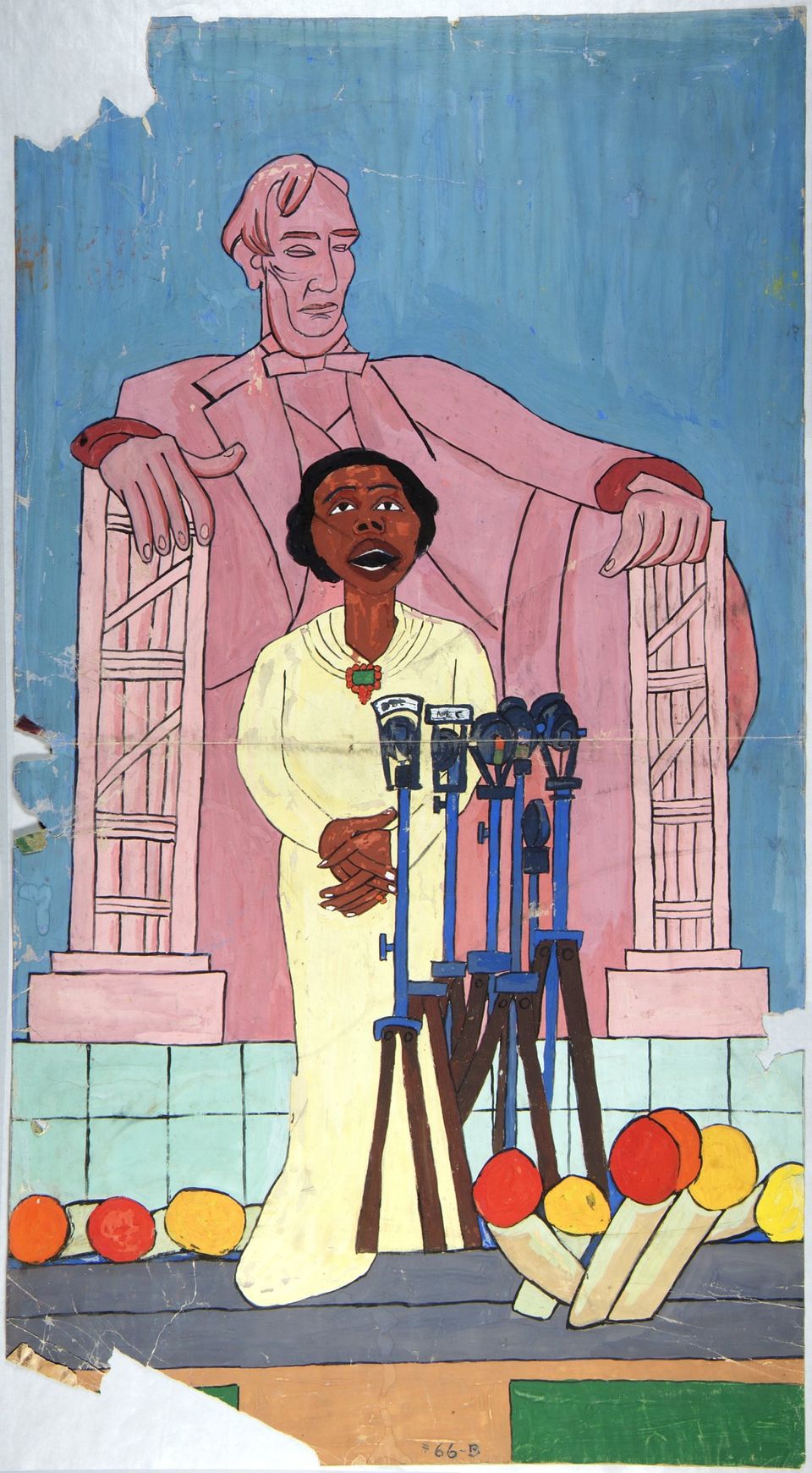

I've been thinking a lot about Marian Anderson lately, the great contralto whose concert on Easter Sunday seventy-one years ago at the Lincoln Memorial brought the nation together in the name of civil rights. When Anderson was denied the use of DAR Constitution Hall because she was black, First Lady Eleanor Roosevelt famously resigned from the DAR, while members of the Roosevelt administration, notably Harold Ickes, rallied around the Philadelphia-born singer and arranged for her to perform on the steps of the memorial. On the afternoon of April 9, 1939, tens of thousands of people attended the concert, while others listened using their radios at home.
That same year, African American artist William H. Johnson created Marian Anderson #1, which speaks to the hope of that event with a childlike ease. The bright colors are optimistic. The lights seem to grow out of the ground like fairy-tale mushrooms, while the tall and slender microphones could be her back-up singers. In the background, President Lincoln reclines a bit like he has just eaten a large meal. His right hand almost seems to be giving the thumbs-up sign of approval to Anderson; he's clearly proud. Anderson, on the other hand, is beaming. You can almost hear her deep honey voice pouring out of her open mouth. The image belies the fact that when she arrived in Washington, D.C., from Philadelphia earlier that morning, she and her mother were denied a hotel room because of their skin color.
Johnson and Anderson were both born in the United States but continued their studies overseas. In Paris, Johnson fell in love with and married Danish artist Holcha Krake. At home, Anderson was restricted by Jim Crow laws, segregation, and prejudice. In Europe, she flourished and became a star. She was a huge success all over Europe, but her concerts in Scandinavia in the 1930s were history-in-the-making. I wonder if Marian, William, and Holcha met in Europe when they were young and starting out.
American Art holds an important collection of works by William H. Johnson. To learn more about this celebrated artist, explore A Journey Through Art with William H. Johnson.

















